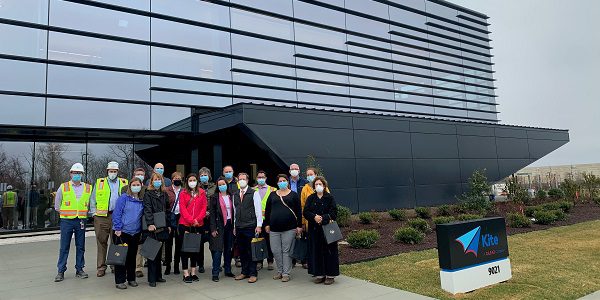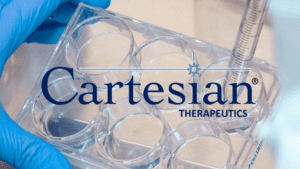
Image Source: Frederick County Office of Economic Development
Kite Pharma is Leading the Charge in Sustainability
As Kite, a Gilead Company continues to grow its footprint, sustainability remains a commitment. Its newest state-of-the-art cell therapy manufacturing facility located along the I-270 corridor in Urbana, Maryland was built in accordance with LEED criteria and BREEAM standards, according to a press release.
During construction of the building, which opened in 2021, Kite used no CFC-based refrigerants in any of the cooling or refrigeration equipment. CFCs, or Chlorofluorocarbons, can cause damage to the ozone layer. Additionally, the building’s horizontal light emission was designed to be only 27% of the allowable Lumens limit.
Plus, Kite diverted 88% of total construction waste from landfills, saving 1,300 tons of waste from six different material streams. Additionally, 40 products of the raw materials had Environmental Product Declarations from 5-different manufacturers. Kite also chose to use low-emitting materials in the flooring, paints, coatings, ceilings, walls, and acoustic insulations.
Saving water was also a top priority in the construction of the Kite facility. Both outdoor and indoor water use were reduced as the site required no additional irrigation. Plus, all newly installed water fixtures are WaterSense labeled, meaning the EPA certifies them as water-efficient. As a result, the fixtures will reduce indoor water use by 35%.
The focus on sustainability began long before construction. Kite made a conscious choice to select an already-developed plot of land for their new Urbana facility. Using previously developed land saves untouched land from being developed, which also requires additional resources, pollution, and materials.
Additionally, Kite implemented an Erosion and Sedimentation Control (ESC) plan, which was approved by the Frederick Soil Conservation District, an organization that works with farmers and engineers to conserve Frederick County’s soil and water.
Kite is committed to not only minimizing environmental impact during the construction of the Urbana facility, but also minimizing environmental impact in its operations. Hence, the company will use 100% tree-free paper at the facility and implement recycling storage areas for materials such as mixed paper, corrugated cardboard, glass, plastics, metals, batteries, and e-waste. The facility will also be tobacco-free.
In an effort to encourage employees to be more environmentally conscious and draw more environmentally-friendly recruits, Kite has added bike storage to the facility, in addition to three preferred parking spots for green vehicles and 20 electric vehicle charging stations.
Kite will also purchase 100% renewable energy for electricity in the building, and use building-level water and energy metering in order to optimize usage. The building also has a smart LED lighting system equipped with occupancy sensors and timer controls, helping to save electricity. Additionally, Kite will offset 18% of the building’s total energy cost.
Gilead, Kite’s parent company, is also committed to sustainability. According to its website, the company believes in ensuring its impact on the world is “positive, enriching and sustainable.” The company strives to minimize its effect on climate change and lower its consumption of natural resources.
Joydeep Ganguly, Senior Vice President of Gilead, shared on Gilead’s website that the company aims to reduce its greenhouse gas emissions by 25% by 2025, compared to 2016 baselines. Additionally, the company owns and leases over 38 green-certified buildings, compared to just 10 buildings in 2016.
Plus, the Science Based Targets initiative (SBTi) have reviewed and confirmed Gilead’s goals, which also include reducing Scope 1 and Scope 2 emissions by 46% and Scope 3 emissions by 15% by 2030. The SBTi validates companies that set goals in accordance with the Paris Agreement goals.
At Gilead and at Kite, sustainability is not just a goal or a talking point. It is embedded in the company’s culture. As Kite continues to grow on the East Coast and in the Biohealth Capital Region, it will do so with sustainability at top of mind.






